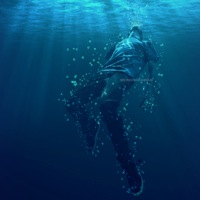Drowning
Origin
Middle English drounen
Definitions
- 1a : to suffocate by submersion especially in water
- b : to submerge especially by a rise in the water level <villages drowned by the flooding river>
- c : to soak, drench, or cover with a liquid
- 2: to engage (oneself) deeply and strenuously <drowned himself in work>
- 3: to cause (a sound) not to be heard by making a loud noise —usually used with out
- 4a : to drive out (as a sensation or an idea) <drowned his sorrows in liquor>
- b : overwhelm
Description
Drowning is the process of experiencing respiratory impairment from submersion/immersion in liquid.
Near drowning is the survival of a drowning event involving unconsciousness or water inhalation and can lead to serious secondary complications, including death, after the event.
According to the World Health Organization, drowning is the 3rd leading cause of unintentional injury death worldwide, accounting for 7% of all injury related deaths (est. 388,000 deaths by drowning in 2004, excluding those due to natural disasters), with 96% of these deaths occurring in low- and middle-income countries. In many countries, drowning is one of the leading causes of death for children under 12 years old. For example, in the United States, it is the second leading cause of death (after motor vehicle crashes) in children 12 and younger. The rate of drowning in populations around the world varies widely according to their access to water, the climate and the national swimming culture.
Drowning itself is quick and silent, although it may be preceded by distress which is more visible. A person drowning is unable to shout or call for help, or seek attention, as they cannot obtain enough air. The instinctive drowning response is the final set of autonomic reactions in the 20 – 60 seconds before sinking underwater, and to the untrained eye can look similar to calm safe behavior. Lifeguards and other persons trained in rescue learn to recognize drowning people by watching for these instinctive movements.
Drowning occurs more frequently in males and the young. Surveys indicate that 10% of children under 5 have experienced a situation with a high risk of drowning.
The following definition was accepted by the World Congress on Drowning in 2002[7] and subsequently by the World Health Organization in 2005: "Drowning is the process of experiencing respiratory impairment from submersion/immersion in liquid."
This definition does not imply fatality, or even the necessity for medical treatment after removal of the cause, nor that any fluid necessarily enters the lungs. The WHO further recommended "Drowning outcomes should be classified as: death, morbidity, and no morbidity. There was also consensus that the terms wet, dry, active, passive, silent, and secondary drowning should no longer be used."[1]
